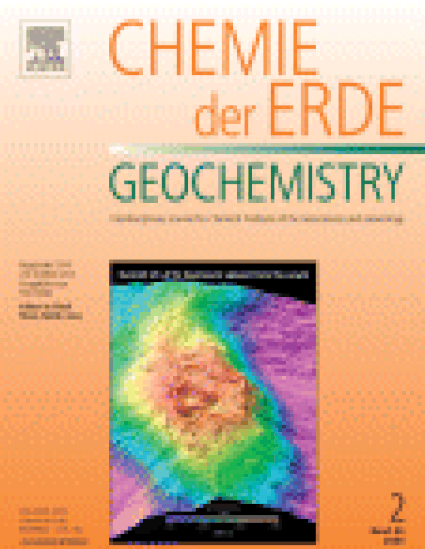
Article
Geology, Geochemistry and Earthquake History of Lṑihi Seamount, Hawaìi's Youngest Volcano
Chemie der Erde - Geochemistry
(2006)
Abstract
A half-century of investigations are summarized here on the youngest Hawaiian volcano, Lṑihi Seamount. It was discovered in 1952 following an earthquake swarm. Surveying in 1954 determined it has an elongate shape, which is the meaning of its Hawaiian name. Lṑihi was mostly forgotten until two earthquake swarms in the 1970s led to a dredging expedition in 1978, which recovered young lavas. The recovery of young lavas motivated numerous expeditions to investigate the geology, geophysics, and geochemistry of this active volcano. Geophysical monitoring, including a real-time submarine observatory that continuously monitored Lṑihi's seismic activity for 3 months, captured some of the volcano's earthquake swarms. The 1996 swarm, the largest recorded in Hawaìi, was preceded earlier in the year by at least one eruption and accompanied by the formation of a ∼300-m deep pit crater, Pele's Pit. Seismic and petrologic data indicate that magma was stored in a ∼8–9 km deep reservoir prior to the 1996 eruption.
Studies on Lṑihi have altered conceptual models for the growth of Hawaiian and other oceanic island volcanoes, and refined our understanding of mantle plumes. Petrologic and geochemical studies of Lṑihi lavas showed that the volcano taps a relatively primitive part of the Hawaiian plume, producing a wide range of magma compositions. These compositions have become progressively more silica-saturated with time, reflecting higher degrees of partial melting as the volcano drifts toward the center of the hotspot. Helium and neon isotopes in Lṑihi glasses are among the least radiogenic found at ocean islands, and may indicate a relatively deep and undegassed mantle source for the volcano. The north–south orientation of Lṑihi rift zones indicates that they may have formed beyond the gravitational influence of the adjacent older volcanoes. A new growth model indicates that Lṑihi is older, taller and more voluminous than previously thought. Seismic and bathymetric data have clarified the importance of landsliding in the early formation of ocean island volcanoes. However, a fuller understanding of Lṑihi's internal structure and eruptive behavior awaits installation of monitoring equipment on the volcano.
The presence of hydrothermal activity at Lṑihi was initially proposed based on nontronite deposits on dredged samples that indicated elevated temperatures (31 °C), water temperature, methane and 3He anomalies, and clumps of benthic micro-organisms in the water column above the volcano in 1982. Submersible observations in 1987 confirmed a low temperature geothermal system (15–30 °C) prior to the 1996 formation of Pele's Pit. The sulfide mineral assemblage (wurtzite, pyrrhotite, and chalcopyrite) deposited after the pit crater collapsed are consistent with hydrothermal fluids with temperatures >250 °C, although the highest measured temperature was ∼200 °C. Vent temperatures decreased to ∼60 °C during the 2004 dive season indicating a waning of the current phase of hydrothermal activity.
Keywords
- Hawaii,
- Loihi,
- Volcano,
- Seamount,
- Petrology,
- Geochemistry,
- Earthquakes
Disciplines
Publication Date
May, 2006
Publisher Statement
Copyright © 2005 Elsevier GmbH DOI: 10.1016/j.chemer.2005.09.002
Citation Information
Jacqueline Caplan-Auerbach, Michael O. Garcia, Eric H. DeCarlo, M. D. Kurz, et al.. "Geology, Geochemistry and Earthquake History of Lṑihi Seamount, Hawaìi's Youngest Volcano" Chemie der Erde - Geochemistry Vol. 66 Iss. 2 (2006) Available at: http://works.bepress.com/jacqueline_caplan-auerbach/23/
